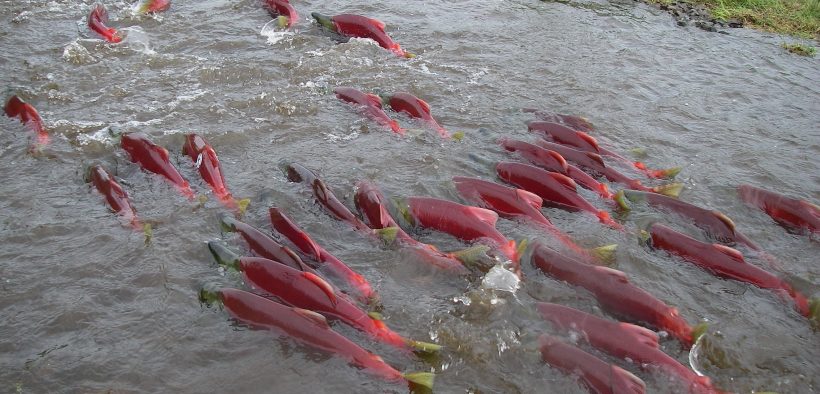Ocean Condition Improves off West Coast, but the Concern is yet to be Over

Washington has been the victim of environmental changes and Climate Change. The reduction in the number of salmons off the West Coast has concerned the whole state as this has many adverse interrelated effects on the whole ecology of the place. But after years of trial and awareness, the condition of the ocean is reportedly improving which will be beneficial for salmon in the ocean this year. This increase in the number of Salmon is the highest after the Blob- a warm water event that started in 2014.
Surveys of 2018 concluded that the tiny fishes which are one of the most critical parts of the food chain are increasing in number and are becoming fatty. Anchovies, an important forage fish, have also shown the growth. Thanks to the growing numbers of Salmon, the sea-lion pups are also growing, so are the fish-eating birds.
The expectations of the Chinook salmon which would return to Columbia River in 2019 are also below average. The water in both Washington and Oregon also are expected to have extreme ocean acidification and poorly oxygenated waters for this year.
Chris Harvey, a research biologist at the National Oceanic and Atmospheric Administration’s Northwest Fisheries Science Center of Seattle, in a conference call with reporters, said, “We are seeing several signs of recovery, but not all of them. We are not quite out of the woods yet.”
It should be noted that Salmon fishes start their lives in freshwater, but they need to be fattened and grown at sea water. Then only they return to their natal streams. Sea mainly depends on the number of salmons return for fishers and killer whales. A major threat for the killer whales, which mainly depend on the salmon in the Puget Sound region, is the absence of food. Poor water conditions ultimately affect whales.
The Blob:
It should be reported that the Blob is a marine heatwave condition, and this is a modern phenomenon. It started off the West Coast in late 2014 after a few years of its inception; it killed numerous marine animals as it impacted the food web. As far as the food depletion on the ocean is concerned, it is the single most factor present in Washington State. It also is blamed for the excessive formation of algal blooms and deaths of species.
The heatwave is also blamed for bringing animals to coastal waters which are rarely seen on the coast. The animals include pompano, a tropical species, and pyrosomes, also called sea pickles. These creatures also have created many problems for the scientists as they fouled the fishing gears.
Though the number of Salmons this year is on the rising, the situation may not help very much for the killer sharks. The reason for this is the salmon who have returned to Washington waters are yet to be stabilized as they are being struggled by the poor ocean conditions.
This is not the only constraint for the whale population. Whale J 17, the only matriarch of the whale clan is predicted to die this year. This is of much importance as J17 helps her two generations by sharing food and leading them to fish in years of deficiency.
Michael Weiss, a Ph.D. candidate at the University of Exeter in the U.K. and a field biologist with the Center for Whale Research who is studying the whales’ prey sharing and other social dynamics said, “We don’t know what is going to happen if we lose J17, we lose her knowledge and experience.”




